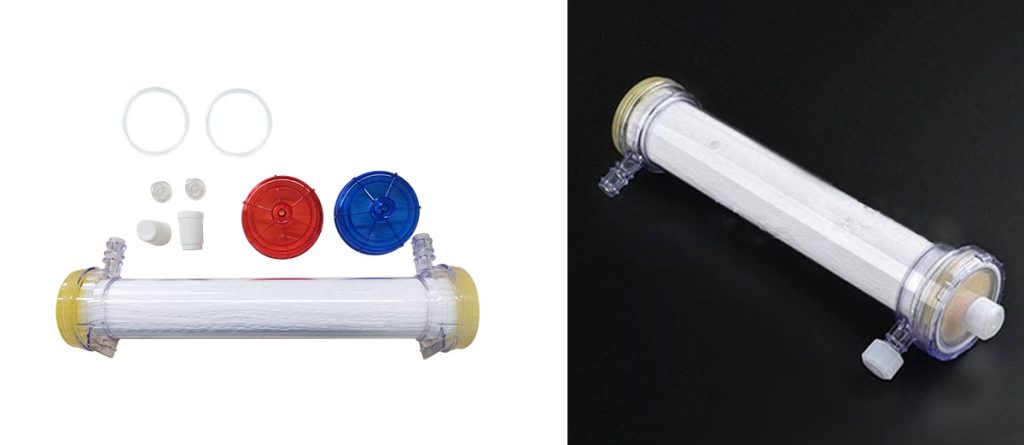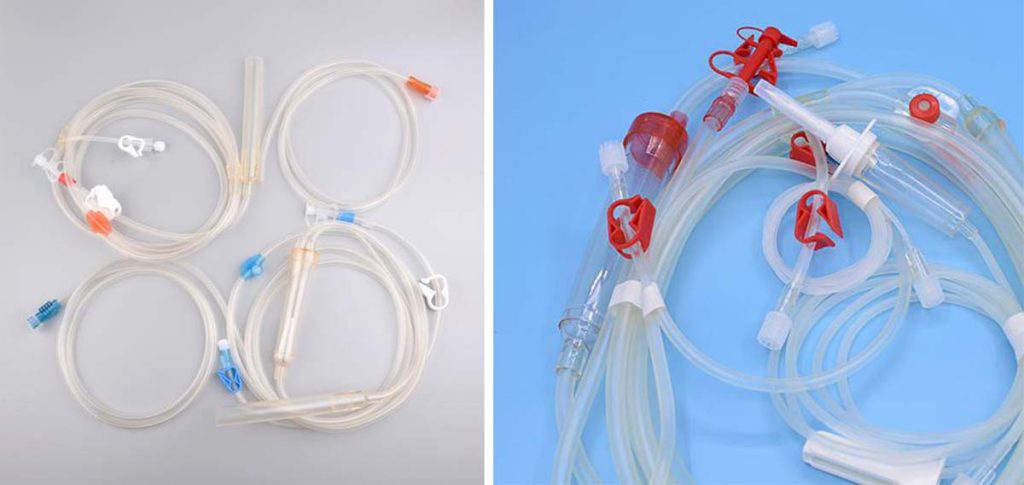

Headaches are a frequent concern for individuals undergoing hemodialysis. Studies reveal that the prevalence of post-dialysis headache ranges from 27% to 73%, making it one of the most common neurological complications in dialysis patients. These headaches often result from rapid biochemical changes, such as fluctuations in urea, sodium, and magnesium levels, which can disrupt the balance between the brain and blood. Additionally, blood pressure variations during treatment may contribute to this issue. Despite its high occurrence, research on the mechanisms and management of dialysis and headaches remains limited, highlighting the need for greater awareness and understanding.
Key Takeaways
- Headaches happen to 27% to 73% of people. Knowing this helps you understand the problem better.
- Watch your symptoms carefully. If headaches start during or after dialysis, talk to your doctor for specific advice.
- Changing habits, like lowering stress and sleeping regularly, can help reduce headaches a lot.
- Eating changes, like eating less salt and drinking enough water, are important to stop headaches after dialysis.
- Tell your doctor about any lasting headaches. Acting early can make your life better.
Causes of Dialysis and Headaches
Physiological Factors
Dialysis-related headaches often stem from abrupt biochemical changes in the body. During hemodialysis, the rapid removal of waste products like urea can disrupt the balance of electrolytes such as sodium, magnesium, and calcium. These imbalances may trigger headaches by affecting the brain’s chemical environment. Sudden fluctuations in blood pressure during treatment also play a significant role. Research highlights that the prevalence of dialysis-related headaches ranges from 27% to 73%, with factors like low magnesium and high calcium levels contributing to their onset. For example, Bana et al. (1972) first described these headaches occurring hours after dialysis initiation, emphasizing the link between physiological changes and headache development.
| Study | Findings |
|---|---|
| Bana et al (1972) | First described dialysis-related headaches occurring hours after dialysis initiation. |
| Pathophysiology | Associated with sudden blood pressure changes and electrolyte imbalances (low magnesium, high calcium). |
Procedural Factors
The dialysis process itself can contribute to headaches. Frequent sessions, as shown in a study by Sousa Melo (2022), are associated with a higher likelihood of headaches. Nearly 50% of participants in this study reported experiencing headaches, highlighting the impact of treatment frequency. Another study by Chhaya (2022) found that women undergoing dialysis were more prone to headaches, although no significant differences in electrolyte levels were observed. These findings suggest that procedural factors, including session frequency and individual patient characteristics, may influence headache occurrence.
| Study | Participants | Findings |
|---|---|---|
| Sousa Melo (2022) | 100 | Nearly 50% reported dialysis headaches, significant association with frequency of dialysis sessions. |
| Chhaya (2022) | 128 | 48 patients experienced PDH, predominantly among women, no significant differences in electrolyte levels. |
External or Lifestyle Factors
Lifestyle factors also play a role in the development of headaches after dialysis. Stress and anxiety are significant contributors, with studies showing a moderate association between these factors and headache incidence. Medications such as NSAIDs, antibiotics, and immunosuppressants can further increase the likelihood of headaches. Statistical data reveals a chi-square value of 9.522 and a p-value of 0.002 for stress-related headaches, while medication use shows a weaker but notable association with a chi-square value of 6.807 and a p-value of 0.009. These findings underscore the importance of managing stress and reviewing medication use to reduce headache risks in patients with chronic kidney disease or end-stage renal disease.
- Stress and anxiety significantly contribute to headache incidence (chi-square value: 9.522, p-value: 0.002).
- Medications like NSAIDs, antibiotics, and immunosuppressants correlate with a higher likelihood of headaches (chi-square value: 6.807, p-value: 0.009).
Recognizing Symptoms of Dialysis-Related Headaches
Identifying Headaches Linked to Dialysis
Dialysis-related headaches often occur during or shortly after a hemodialysis session. These headaches typically begin within 2.5 hours of treatment and may resolve within 72 hours. According to the International Classification of Headache Disorders (ICHD-3), specific diagnostic criteria help distinguish these headaches from other types. For example, a study found that 9.09% of patients met the ICHD-3 criteria for dialysis headaches, with 6.4% experiencing symptoms immediately after dialysis treatment.
| Characteristic | Dialysis-Related Headaches | Other Headaches |
|---|---|---|
| Occurrence | During or within 2.5 hours after dialysis | Varies |
| ICHD-3 C1 Criteria | 14 patients (9.09%) met criteria | Not applicable |
| Prevalence | 15.58% (24/154) of patients | N/A |
| Risk Factors | Female sex, diabetes | N/A |
Patients may notice that their headaches worsen during dialysis sessions or improve after completing treatment. These symptoms often correlate with rapid biochemical changes, such as shifts in blood pressure or electrolyte levels. Recognizing these patterns can help dialysis patients and healthcare providers identify post-dialysis headaches more effectively.
When to Consult a Healthcare Provider?

Patients experiencing recurring or severe headaches after dialysis should seek medical advice. Evidence-based guidelines suggest consulting a healthcare provider if the following criteria are met:
| Criteria | Description |
|---|---|
| A | At least three episodes of acute headache fulfilling criteria C & D |
| B | The patient is undergoing hemodialysis |
| C | Evidence of causation shown through at least two of the following: |
| – Each headache episode starts during hemodialysis | |
| – Each headache episode worsens during hemodialysis | |
| – Each headache resolves within 72 hours after completion of hemodialysis | |
| – Headache episodes disappear after a successful kidney transplant | |
| D | The headache cannot be better classified by other ICHD-3 criteria |
Dialysis patients should also consult a healthcare provider if their headaches interfere with daily activities or if they experience additional symptoms, such as nausea, dizziness, or vision changes. Early intervention can help address underlying causes and improve quality of life.
Managing Headaches After Dialysis
Medical Treatments and Interventions
Medical treatments can help alleviate dialysis-related headache symptoms. Healthcare providers often recommend over-the-counter pain relievers like acetaminophen. These medications provide temporary relief without interfering with dialysis. In cases of severe post-dialysis headache, prescription medications may be necessary. For example, doctors might prescribe triptans or anti-migraine drugs to manage recurring headaches. Adjusting the dialysis procedure itself can also reduce symptoms. Modifying the dialysis schedule or using a different dialysate composition may help stabilize blood pressure and electrolyte levels. Patients with chronic kidney disease or end-stage renal disease should consult their healthcare provider before starting any new medication.
Lifestyle Adjustments for Relief
Lifestyle changes can play a significant role in managing dialysis and headaches. Maintaining a consistent sleep schedule helps reduce stress and improve overall health. Regular physical activity, such as walking or yoga, can also lower stress levels. Patients with chronic kidney disease should monitor their diet closely. Reducing sodium intake and avoiding processed foods can help maintain electrolyte balance. Staying hydrated is equally important, but dialysis patients must follow fluid restrictions recommended by their healthcare provider. Stress management techniques, such as meditation or deep breathing exercises, can further reduce the likelihood of a dialysis-related headache.
Quick Tips for Immediate Headache Relief
Simple strategies can provide quick relief from headaches after dialysis. Applying a cold compress to the forehead can reduce pain and inflammation. Drinking a small amount of water, if permitted, may help alleviate dehydration-related headaches. Resting in a quiet, dark room can also ease symptoms. Patients experiencing frequent post-dialysis headache episodes should keep a headache diary. Recording the timing, severity, and triggers of each headache can help identify patterns and improve treatment strategies. Always discuss persistent symptoms with a healthcare provider to ensure proper care.
Preventing Headaches After Dialysis
Dietary And Nutritional Changes
Proper dietary adjustments can significantly reduce the risk of post-dialysis headache. Patients with chronic kidney disease should focus on maintaining a balanced diet that supports electrolyte stability. Reducing sodium intake helps prevent fluid retention, which can lead to blood pressure fluctuations during hemodialysis. Incorporating potassium-rich foods, as advised by a healthcare provider, may also help maintain electrolyte balance.
Caffeine consumption during hemodialysis has shown promising results for habitual caffeine users. Studies suggest that caffeine can reduce the incidence of headaches by stabilizing blood flow to the brain. However, dialysis patients should consult their healthcare provider before making dietary changes to ensure compatibility with their treatment plan.
Adjustments To Dialysis Procedures
Modifying dialysis procedures can play a crucial role in preventing headaches. Using bicarbonate dialysate helps maintain acid-base balance, reducing the likelihood of biochemical imbalances that trigger headaches. Slowing the dialysis process and reducing the blood flow rate can minimize sudden changes in blood pressure and serum sodium levels. These adjustments create a more stable environment for the body during treatment.
| Preventive Strategy | Description |
|---|---|
| Bicarbonate dialysate | Helps maintain acid-base balance during dialysis. |
| Slow dialysis with reduced blood flow rate | Minimizes sudden changes in blood pressure and serum sodium levels. |
| Caffeine ingestion during hemodialysis | Reduces headache incidence for habitual caffeine consumers. |
Patients with end-stage renal disease should discuss these procedural changes with their healthcare team to ensure they align with their specific medical needs. Personalized dialysis protocols can significantly improve patient outcomes.
Hydration And Stress Management

Proper hydration and stress management are essential for preventing post-dialysis headache. Dehydration and volume overload are strongly associated with headaches in patients with chronic kidney disease. Maintaining an appropriate fluid balance, as guided by a healthcare provider, can help reduce these risks.
Stress and anxiety also contribute significantly to headaches after dialysis. Techniques such as meditation, deep breathing exercises, and yoga can help patients manage stress effectively. Clinical guidelines emphasize the importance of regular monitoring and targeted therapeutic interventions to address these factors.
| Study Title | Findings |
|---|---|
| Multifactorial Determinants of Post-Dialysis Headaches | Dehydration and volume overload symptoms strongly linked to headaches. |
| Navigating Post-Dialysis Challenges | Personalized protocols and stress management improve patient well-being. |
By addressing hydration and stress, patients with end-stage renal disease can reduce the frequency and severity of headaches, improving their overall quality of life.
Conclusion
Headaches after dialysis are a common challenge, but they can be effectively managed with the right strategies. Understanding the triggers, such as dehydration symptoms or volume overload, allows patients to take proactive steps. Combining management and prevention techniques, including dietary changes, stress reduction, and personalized hemodialysis protocols, significantly improves outcomes.
Statistical data highlights the importance of addressing multiple factors. For instance, patients with a history of migraines or smoking status show higher susceptibility to headaches. Social support also plays a role in reducing headache frequency.
| Factor | p-value | Effect Size (Phi) |
|---|---|---|
| Migraine history | 0.007 | 0.113 |
| Smoking status | 0.000 | 0.356 |
| Social support | 0.034 | -0.089 |
| Multiple health conditions | 0.000 | 0.398 |
Patients should consult their healthcare provider to tailor these strategies to their needs. With proper care, they can reduce the frequency and severity of headaches, improving their quality of life.
